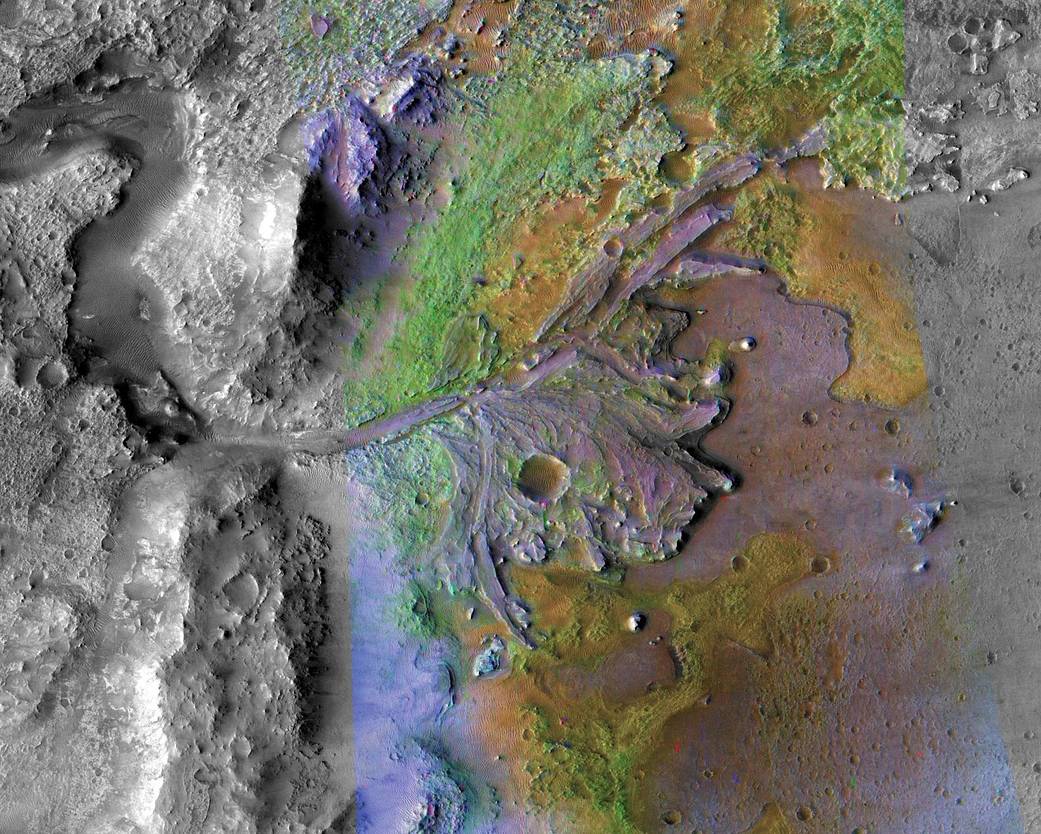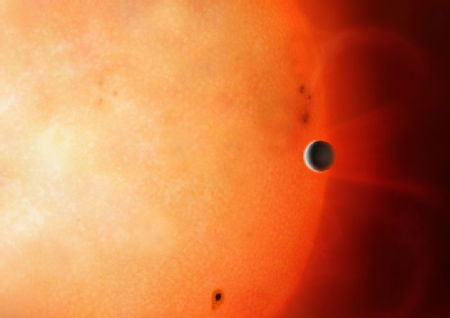This time spacefans we’re spending some time on Mars and puzzling over a forbidden planet!
DID DUST STORMS DESTROY MARS’ OCEANS?
Dust is a pest everywhere, but a particular pest on Mars, where the entire planet can be blotted from view. Last year’s global storm caused more than just obsuring the surface, it also led to the loss of the wildly successful Opportunity rover that outlived its original mission 60 times over.
“From the get-go, Opportunity delivered on our search for evidence regarding water,” said Steve Squyres, principal investigator of the rovers’ science payload at Cornell University. “And when you combine the discoveries of Opportunity and Spirit, they showed us that ancient Mars was a very different place from Mars today, which is a cold, dry, desolate world. But if you look to its ancient past, you find compelling evidence for liquid water below the surface and liquid water at the surface.”
Drive along with the NASA’s Opportunity Mars rover and hear the voices of scientists and engineers behind the mission. Designed to run for 90 days, the exploration spanned more than 15 years from 2004 to 2019. Along the way, it discovered definitive proof of liquid water on ancient Mars and set the off-world driving record. For more information on the Mars Exploration Rovers and all of NASA’s Mars missions, visit mars.nasa.gov. Credit: NASA/JPL-Caltech
These dust storms are in fact common, but usually short lived, lasting a few days at most. These global stoms are unpredictable and annoying is you like astronomy. Last year was the closest the red planet has been to Earth since 2003 and no one, myself included could see a thing.
For decades, planetary scientists have suspected that ancient Mars was a much warmer, wetter environment than it is today, but estimates of just how much water Mars has lost since its formation vary widely. Now, new isotopic measurements by researchers at NASA’s Goddard Space Flight Center reveal that an ocean once covered approximately twenty percent of the Martian surface. This new picture of early Mars is considerably wetter than many previous estimates, raising the odds for the ancient habitability of the Red Planet.
Credit: NASA Goddard
The evidence for Mars’ wet past is legion with shorelines, dry riverbeds, minerasl and rocks that can only form in water. What happened to all that water and why it vanished is an ongoing puzzle.“The global dust storm may give us an explanation,” says Geronimo Villanueva, a Martian water expert at NASA Goddard.
Villanueva worked with fellow scientists at the ESA and Russia’s Roscosmos space agency to confirm that these powerful, global dust storms appear to push water vapor from its typical altitude of 20 kilometers above the Martian surface to much higher elevations of at least 80 kilometers. NASA’s Mars Reconnaissance Orbiter observed a similar phenomenon in 2007. By hurling water into the upper atmosphere, these dust storms may interfere with the planet’s water cycle, stopping water from condensing and falling back down to the surface. On Earth, water precipitates as rain or snow or hail. The same process may well have existed on Mars billions of years ago. At higher altitudes, where the Martian atmosphere is especially thin and tenuous, solar radiation can easily penetrate to break up the water molecules and blow their component elements into space, in a process known as sputtering., and may have been responsible for this loss of water. Villanueva and his colleagues speculate. “When you bring water to higher parts of the atmosphere, it gets blown away so much easier,” says Villanueva, who has spent his career piecing together the history of Martian hydrology.
Villanueva and his colleagues published a report on April 10 in the journal Nature that they found signd of dissipating water vapor by using the ExoMars Trace Gas Orbiter at Mars, a spacecraft managed by ESA and Roscosmos. The orbiter measured The quantities of water molecules at different altitudes before and after the 2018 storm. Scientists had their first indications that all types of water molecules reached high into the atmosphere, which was important data into how water may be disappearing from Mars. Now, says Villanueva , scientists will have to take this new information into account in their predictions about how much water flowed on ancient Mars and how long it took for it to disappear.
FORBIDDEN PLANET
Now we’re all familiar with ‘hot Jupiters’ these days, you know those giant planets that whizz round their stars in days or less, but this one is different. This is a sub Neptune to Neptune-like planet which is 920 light years from Earth and orbits its star in just 1.34 days and this configuration has never been observed before now. It has a mass of 20 Earth masses, and a radius 20% smaller than Neptune, and is 1000 degrees Celsius.So far only small rocky planets like ours or the aforementioned hot Jupiters are believed to be able to exist this close to a parent star, so is known as the Neptune desert as large gas giants can hold their own and rocky planets because, like Mercury, just sit there like rocks do. A Neptune type planet ‘should’ have its atmosphere burned off and left with just its core.
“This planet must be tough — it is right in the zone where we expected Neptune-sized planets could not survive,” study author Richard West, from the University of Warwick, states. “It is truly remarkable that we found a transiting planet via a star dimming by less than 0.2% — this has never been done before by telescopes on the ground, and it was great to find after working on this project for a year.”
These ‘super-Earths’ are the one type of planet that we are missing in our Solar system, but things were very lively way back then and we may have had one, only to have it evicted by say Jupiter. Its very like that it migrated inwards to its star and may well yet have its atmosphere stripped away from it. Its though that its not been there long, possibly as few as a million year.
Dr Richard West, from the Department of Physics at the University of Warwick comments,“This planet must be tough – it is right in the zone where we expected Neptune-sized planets could not survive. It is truly remarkable that we found a transiting planet via a star dimming by less than 0.2% – this has never been done before by telescopes on the ground, and it was great to find after working on this project for a year. We are now scouring out data to see if we can see any more planets in the Neptune Desert – perhaps the desert is greener than was once thought”
“This planet doesn’t have enough mass to hold onto its atmosphere, given the fierce heat from being so close to its star,” Coel Hellier, an astronomer at Keele University who wasn’t involved in the study. That means that it was likely born much further out from its star, and has moved to its current short-period orbit only recently.”
GET YOUR BOARDING PASSES!
Once again we can send our names into space! I don’t know about you but I love my trips to Mars and beyond. I love the fact that you can send your name in seemingly any and every language which is awesome.

Members of the public who want to send their name to Mars on NASA’s next rover mission to the Red Planet (Mars 2020) can get a souvenir boarding pass and their names etched on microchips to be affixed to the rover.
Credits: NASA/JPL-Caltech
The Mars 2020 rover will be equipped to search for life and prepare for the first human expedition to the red planet by taking samples to be returned to Earth, and of course study the planet as it finds it.
“As we get ready to launch this historic Mars mission, we want everyone to share in this journey of exploration,” said Thomas Zurbuchen, associate administrator for NASA’s Science Mission Directorate (SMD) in Washington. “It’s an exciting time for NASA, as we embark on this voyage to answer profound questions about our neighboring planet, and even the origins of life itself.”

On ancient Mars, water carved channels and transported sediments to form fans and deltas within lake basins. Examination of spectral data acquired from orbit show that some of these sediments have minerals that indicate chemical alteration by water. Here in Jezero Crater delta, sediments contain clays and carbonates.
Credit: NASA
That’s it for this time spacefans, say hi if you’re at EveNorth!




